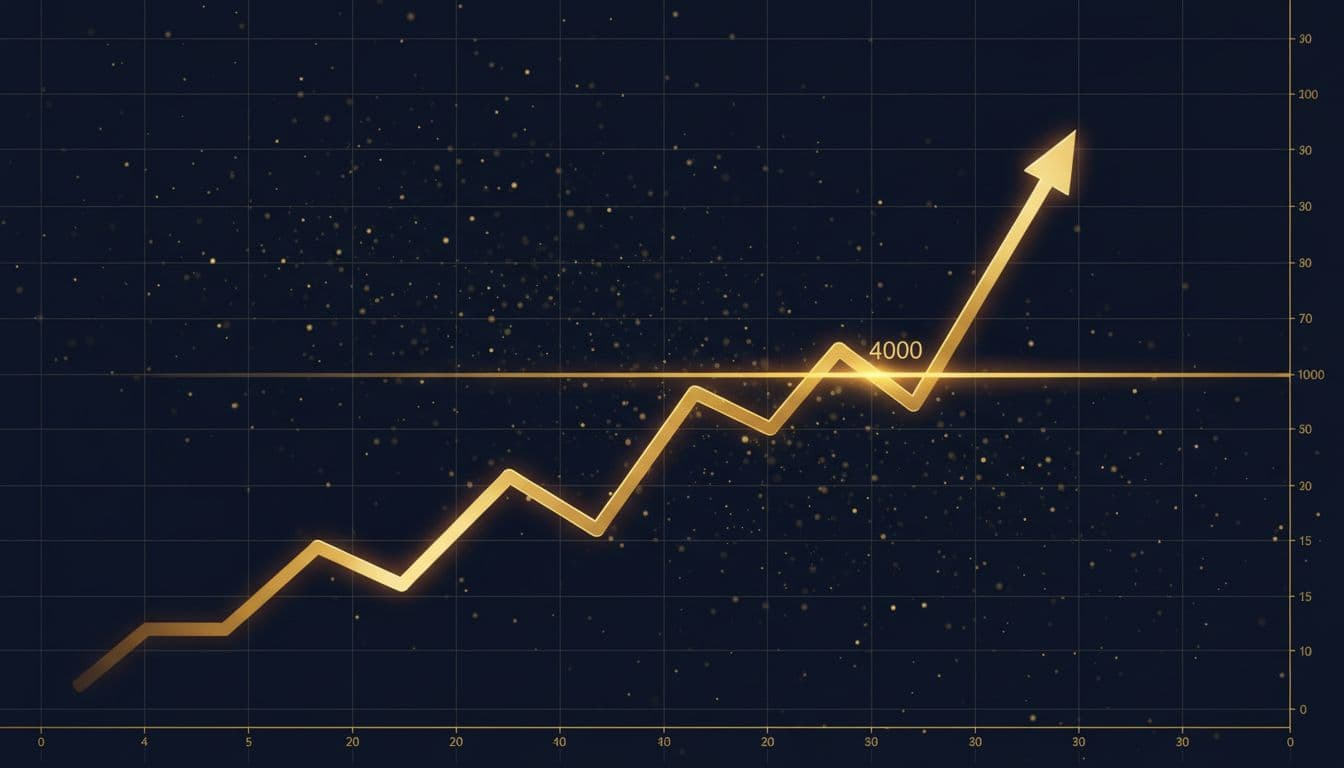Gold just crossed $4,000 an ounce for the first time. That level carries both headline power and real market impact. If you invest in stocks, hold cash, trade commodities, or save for retirement, this move affects you. Here is a clear look at why gold is up, what could come next, and practical steps to consider.In this article:
Why gold is surging
Gold tends to rise when investors want safety, when rates look likely to fall, or when inflation threatens purchasing power. At $4,000, several forces likely came together:
- Rate expectations: When markets expect easier policy or slower growth, the opportunity cost of holding gold drops.
- Inflation stickiness: Even if headline inflation cools, services and wages can keep pressure on real returns.
- Geopolitical stress: Conflict, supply shocks, and trade frictions push investors toward safe assets.
- Central bank buying: Net purchases by central banks can support price floors and momentum.
- Technical breakouts: Once key resistance levels fall, trend followers and CTAs can amplify moves.

Winners and losers at $4,000
Big moves create new winners and losers. Here is a quick snapshot:
- Winners: Physical holders, long-only gold ETFs, miners with low all-in sustaining costs, and royalty/streaming firms.
- Mixed: Jewelry demand can soften at high prices, but investment demand may offset it.
- Losers: Short sellers caught in squeezes, hedgers who reduce upside, and consumers facing higher jewelry costs.
For miners, margin expansion depends on costs. If energy, labor, and equipment rise slower than the gold price, profits can grow faster than spot. Royalty and streaming companies often benefit from rising prices without the same operating risk.
Is the rally sustainable?
No one can call tops with certainty. You can, however, frame scenarios:
- Soft landing: If growth steadies and inflation cools, momentum may fade; gold could consolidate in a wide range.
- Sticky inflation: If services and wages keep pressure up, real yields can stay low; gold holds or grinds higher.
- Shock risk: Escalating geopolitical or credit stress can extend safe-haven bids.
Watch real yields, the dollar, central bank purchases, and positioning data. Sustained strength often needs a mix of soft real yields and steady demand.

How to invest in gold now
Consider your goal first: hedge, growth, or trade. Then choose a vehicle and a plan.
Vehicles
- Physical gold: Coins and bars offer no counterparty risk, but carry storage and spreads.
- ETFs: Simple access and liquidity. Check fees, collateral, and structure.
- Miners: Higher beta to the gold price, but tied to costs, geology, and management.
- Futures and options: Efficient exposure for experienced traders. Use strict risk rules.
Position sizing
- Define risk per trade or per asset class, such as 0.5% to 2% of portfolio value.
- Stagger entries. Use partial buys to manage timing risk.
- Set invalidation points. If price breaks below your thesis, exit or reduce.
Diversification and rebalancing
- Gold can hedge equities and currencies. Do not let one trade dominate your plan.
- Rebalance on a schedule or at thresholds. Harvest gains to keep risk steady.
Key risks to watch
- Policy shifts: Faster rate hikes or hawkish surprises can lift real yields and pressure gold.
- Rapid reversals: If positioning is crowded, a small catalyst can spark a sharp pullback.
- Dollar strength: A surging dollar often weighs on commodities priced in dollars.
- Liquidity and spreads: Physical and some mining shares can see wider spreads in stress.
Plan for volatility. Use position sizes you can hold through normal swings. Protect downside first.

Is $4,000 a sign to buy or sell? It depends on your plan. If you have no allocation, consider gradual entries. If you are overweight, scale out on strength and rebalance. Will central banks keep buying? Purchases tend to be steady, but they can slow if prices run too far, too fast. Watch quarterly data and policy statements. Should I prefer ETFs or physical? ETFs are easier for trading and rebalancing. Physical fits long-term hedging if you can manage storage and insurance. What if price drops back below $4,000? Treat it as a test of new support. Use alerts and stick to your risk rules. Avoid impulsive changes.
To contact us click Here .

